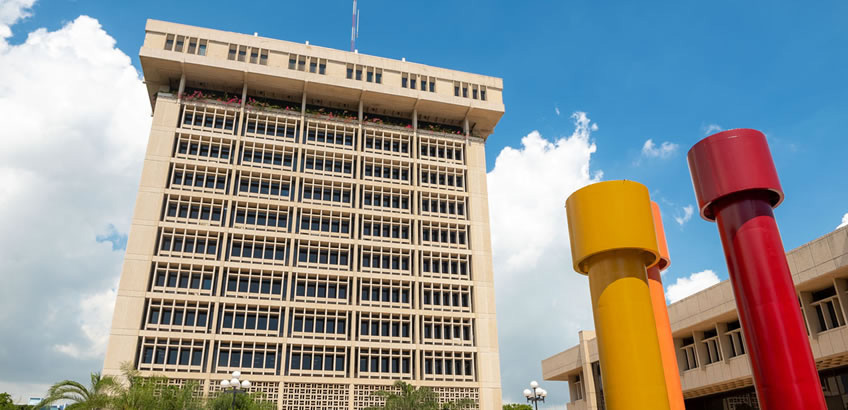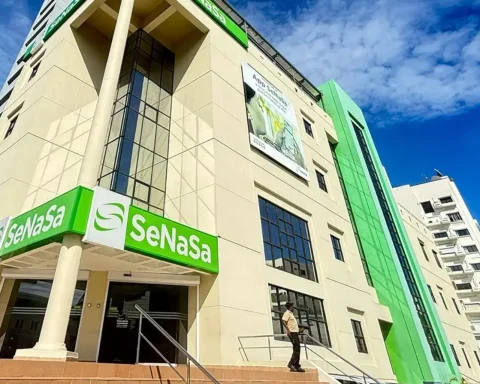The monetary policy rate increased to 5.0% by the Central Bank last Monday matches the reference interest rate set low by the issuing entity in June 2019 to be applied at a time when it was trying to rid the economy of threats of slowing down
The 5.0% rate set on January 31, 2022 implied an increase of 50 points, while when that level was set on June 29, 2019, it was for an equal reduction of 50 points. Now the rate rose from 4.50 to 5.0% and in June 2019 it fell from 5.50 to 5.0%.
The economic scenarios are different and the purpose of monetary policy was also different. On that occasion, the purpose was to stimulate the economy, slowed down by local impacts of the “commercial war” that the great powers were waging at that time, and now the Central Bank authorities seek to curb the inflationary effects that affect the economy, with a high imported component. . By the end of the first half of 2019, trending down inflation was less than 2.0%, with a period of eight consecutive months below the lower limit and with some months without inflation. In May of that year the level was -0.03% and the accumulated had dropped to 1.36%. The economy, on the other hand, grew around 5.0%, although to a greater extent it reflected a loss of speed in relation to the 5.7% rate that it accumulated in the first quarter of 2019.
The increase now was the third consecutive arranged by the Central Bank in its reference rate, accumulating since the initial decision in November 2021, a total of 200 basis points, while the decrease in June 2019 occurred after a year of maintain the previous level, 5.25%, set in June 2018.
The new level of the monetary policy rate is still about 120 basis points below the highest level set in the last decade, which was 6.25%, when in March 2011 the 6.0% rate was raised by 20 points. then prevailed.
The level of 6.25% per year had also been reached by the monetary policy rate in August 2013, when it was increased by 200 basis points, the largest non-cumulative increase, going from 4.25% to 6.25% per year. The second largest single increase was in January 2015, at 125 basis points.
Motivations for June 2019
In the motivations that accompanied the June 2019 decision, the Central Bank stated that the economy had expanded by 5.1% in the January-May period, “moderating with respect to the 5.7% growth observed in the first quarter of the year. The behavior of economic activity reflected a slowdown in private investment, associated with factors of external and internal uncertainty”.
On the occasion, he based his decision to reduce the reference rate “on a detailed analysis of the balance of risks regarding inflation forecasts, including international and domestic macroeconomic indicators, market expectations and medium-term projections. Monthly inflation for May was -0.03%, while accumulated inflation in the first five months of the year decreased to 1.36%. On the other hand, year-on-year inflation, that is, from May 2018 to May 2019, fell to 1.31%, for the seventh consecutive month below the lower limit of the target range.
It also alleged that “core inflation, which reflects monetary conditions by excluding the prices of the most volatile goods such as food and fuel, fell to 1.98% in May, while a downward revision was observed in inflation expectations of economic analysts for the entire monetary policy horizon. Considering this decision, the BCRD forecasting system indicated in June 2019 that inflation would remain below the lower limit of the target range of 4.0% ± 1.0% until the end of 2019, converging to the center of the target in 2020.
january arguments
While for the decision of last January 31, the BCRD stated that it was based on an exhaustive evaluation of the behavior of the world economy, the greater persistence of inflationary pressures and the perspectives of international financial conditions.
“In that order, price dynamics continue to be affected by external shocks that are more permanent than expected, associated with higher prices for oil and other important raw materials for local production, as well as the increase in the global cost of transporting goods. containers and other disruptions in supply chains”, he emphasized.
It specified that “in particular, the monthly variation of the consumer price index (CPI) in December was 0.73%, while year-on-year inflation at the end of 2021 was 8.50%” and that “on the other hand, underlying inflation year-on-year, which excludes the most volatile components of the basket, reached 6.87% in December 2021, reflecting second-round effects on production associated with supply shocks.”
Going forward, the BCRD’s forecasting system indicates that, in an active monetary policy scenario, year-on-year inflation would converge to the target range of 4% ± 1% during the monetary policy horizon, slower than originally forecast, the body highlighted. issuer in its explanatory document.

















